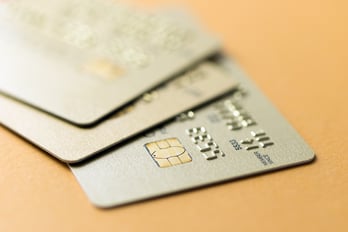Recently, I wrote a blog article about attending the big Money 20/20 show in Las Vegas. Of course, there are other big shows for people in the payments industry.
The Association for Financial Professionals (AFP) has an annual show as well as a professional designation (Certified Cash Manager). The National Automated Clearinghouse Association (NACHA) has one and their professional designation is Accredited ACH Professional. The Electronic Transaction Association (ETA) has a show that attracts about 4,000 people, and their professional designation is Certified Payments Professional. The American Bankers Association (ABA) and the Bank Administration Institute have their own conferences while bank core processors such as Jack Henry have annual user conferences too.
Despite the draw of the competition, only Money 20/20 has over 11,000 attendees and over 400 vendor booths. Something is going on here in the payment space that attracts so many people to a relatively new show (this is the 5th edition). Maybe it’s FOMO (“fear of missing out”), but everybody wanted to be there! You can bet with all that brainpower that a few successful start-ups will come of it. We just don’t know which ones will represent the future of payments.
What Wasn’t Said at Money 20/20
I should say at the outset that there are some pretty big issues in payments that were NOT covered at this show.  The big issues for the acquiring business are:
The big issues for the acquiring business are:
- Managing risk in ACH transactions
- Knowing the customer
- The cost of interchange
- The failure of a timely and completed on-schedule EMV card rollout
- EMV certification backlogs
- The failure of the EMV rollout to meet its own self-imposed deadlines
- Fraud at POS
- Online and associated chargebacks
I didn’t see much attention to those subjects at Money 20/20. I guess that is because the people showing their solutions are thinking about the future of payments, not about what is happening today in the real world. That’s okay because we always need to innovate and think about providing better solutions to payment transactions.
What Wasn’t Acknowledged at Money 20/20
There was also little acknowledgement about what has NOT changed in the payments space.
- The vast majority of cubic dollars still flows via wire transfer and check, not credit and debit card or ACH which are used for low dollar payments.
- Cash is still king.
- Consumers have not yet adopted mobile payments in any meaningful way.
- Prepaid cards are a niche business despite all the propaganda about everybody giving or getting a prepaid card for the holidays.
- Remittances to foreign countries work extremely well now and are very cost effective, and there is an enormous user base that finds the current business model very consumer friendly.
- Consumers have not gotten any more comfortable with security issues involving using their credit cards online.
- The majority of merchants have not yet adopted chip card payments, including whole industries such as the petroleum industry.
In short, the status quo payment mechanisms work pretty well and are pretty convenient for consumers.
Focus on the Future of Payments
Money 20/20 is about future payment trends.
We should be realistic about what it takes to launch a new type of payment. It means, quite simply, being an entrepreneur. You have to start with some kind of innovation that makes users want to adopt it and use it. You have to assemble a team to build it. You have to continually change your assumptions to make sure the product is addressing a real need, not an imagined one. This is called “disruptive innovation” in the payments industry, but most people are creatures of habit and don’t like innovation unless it offers a truly new value proposition such as was the case with Airbnb and Uber. Neither weren’t even really about payments.
Those two business models were about taking an experience that was fairly unpleasant for the user — or even annoying — and transforming it in a positive manner. They made the payment an inherent part of the booking, so it was almost, but not quite, invisible.
Starbucks did the same thing with their mobile payment service. The worst part of going to Starbucks was standing in line and waiting to order and pay, and then waiting for your drink to be made, particularly when you came into the store three times a day.
Somebody thought, “How can we take the annoying part of coming here out of the equation?” That’s what they did. They didn’t focus on payments; they focused on how to make a better experience for the buyer. Better payments were a by-product.
A lot of these products have consumer-facing technology. They are trying to reset consumer expectations about:
- How long it takes to buy something
- How convenient it is to buy it
- How to save money
- How to have more choices
Let’s face it: consumers don’t really care about what it costs the merchant to run his business, and they don’t really care about what the merchant is paying to process their payment. They want the easiest and simplest buying experience. Many of the vendors at the show assume that the consumer will pay with a credit card, but this is not always a valid assumption.
Consumer Preferences
Here’s what at least half of American consumers don’t want. They don’t want a “gotcha” when they go to pay for something. After finally finding what they want to buy, they don’t want to have to apply for credit when they go to pay for it. They want a seamless buying experience.
This is particularly true with the middle class. They have income and assets, but not enough when something unexpected happens such as paying for a big vet bill, a costly funeral, or the rebuild of their car’s transmission.
Like many Americans, they are struggling with the higher cost of housing, healthcare, child care and education. They are getting by comfortably until life intervenes with an unexpected event and they have to come up with a few thousand dollars. It is just not realistic to suggest, as the card brands do, that the solution is to apply for another credit card. Sometimes additional credit turns out to be a “cement life raft” when, for example, the consumer takes on new debt at 21% annual interest.
The credit card issuing banks are continually looking for new consumers who will revolve their balances. The current Federal Reserve discount rate is 1%. This is the rate at which banks borrow from the Fed’s discount window. It is their marginal cost of funds. If they can borrow money at 1% and lend it out at 21%, this is a fabulous business model. Ideally, banks would like a 5% spread over the cost of funds, even lending at prime rates to prime borrowers (today’s prime rate is 3.5%). In the credit card model, they have a spread that is roughly four times this!
Now yes, their write-offs in the consumer card portfolio will be around 4% compared to perhaps a half of a percent in a commercial loan portfolio, but you can see why the credit card issuing model is so powerful. The only catch is that it is a business of huge scale: you have to be able to issue tens of millions of cards to be a player. This is why roughly 75% of all credit cards are issued by less than a dozen financial institutions, out of over 5,000 commercial banks in the country.
Our Vision for the Future of Payments
We didn’t see it at Money 20/20, but we predict the default payment will not be a credit or debit card, but rather, it will be the checking account which is where all funds originate anyway. This is certainly true for consumers who do not revolve their card balance now (about half of all cardholders). The chronology:
- Consumers will soon pay for items using a default for each type of payment, credit card, debit card and checking account.
- Next, merchants — particularly top 200 retailers — will incent their customers to push a payment from their checking account rather than having it pulled from the credit card issuing bank. (By not paying interchange for credit card settlements, merchants can and will provide enough incentives for the consumer to pay from their checking account.)
- Finally, customers will choose checking accounts as their default when given the opportunity to earn more loyalty and rewards points as well as discounts.
This is how we see the future of payments changing over the next few years, and it will be a good thing for both merchants and consumers.
A Tried-and-Proven Payment Solution
So when a consumer is at the point of sale and just doesn’t have enough money to cover a bill from a veterinary hospital, funeral home or car repair shop for a high-dollar purchase, the right thing to do is to help them over the hump. This means approving the purchase, letting the consumer leave with their purchase, and giving them an extra 30 days to pay the bill without applying for credit or paying interest.
This is where CrossCheck comes in. For over 30 years, we have stood at the point of sale doing exactly that — helping consumers get what they want right then and there. Using our Multiple Check premium service, consumers write 2 – 4 checks for their transactions that are deposited over 30 days according to a schedule agreed upon by them and the merchant. Checks are guaranteed up to amounts stated in the service agreement, and the consumer leaves with their purchase. It’s easy, it’s fast, and most important, it works brilliantly. Learn more my downloading our free guide.



